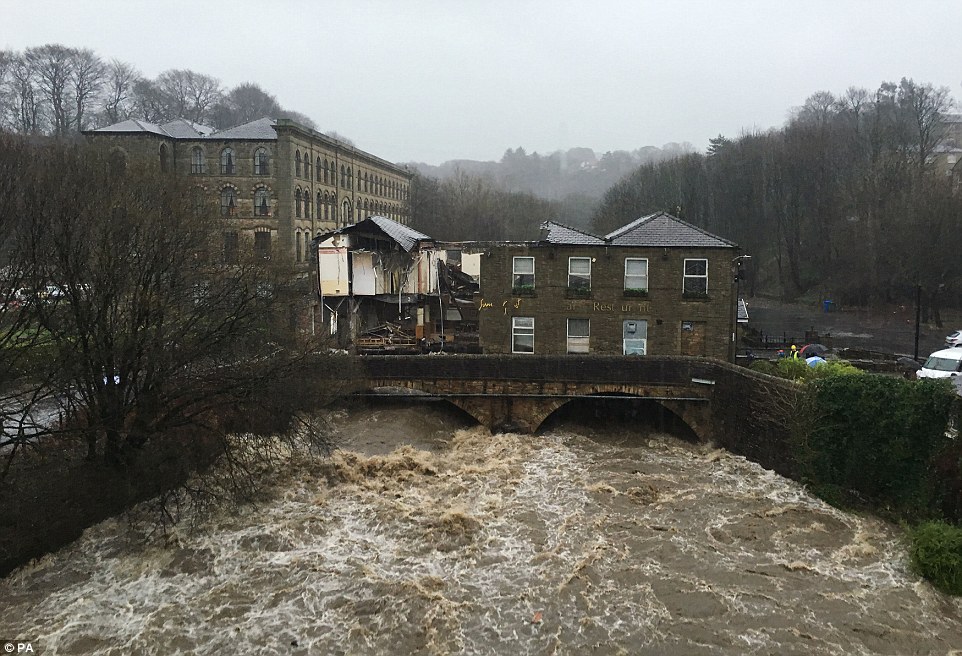A report out today from the Greater Manchester Combined Authority (GMCA) details rapid response of Greater Manchester’s authorities to help those affected and shows nearly 2,500 homes were saved from rising water levels.
Last December, Storm Eva brought unprecedented rainfall to Greater Manchester with prolonged, intense rain falling on already saturated catchments which led to river levels rising rapidly. Many rivers reached record levels with some recording levels over 1 metre higher than previously recorded. On Boxing Day, more than 2,250 homes and 500 businesses in the city-region were flooded, more than 31,200 properties lost their power supplies and damage to infrastructure totalled £11.5m. In addition, tens of thousands of properties experienced disruption due to power loss and road closures.
Rainfall from Christmas Day to Boxing Day was heaviest in the upper parts of the River Irwell catchment to the North of Manchester where up to 128mm fell in a 36 hour period. 37 of 44 gauges in the River Irwell, Roch and Croal catchments recorded their highest ever levels. The river level for the River Roch on Boxing Day, at its downstream confluence with the Irwell, was 1.1m higher than anything recorded in its 64 year history.
Previous work on defences meant floodwater was prevented from reaching more than 2,450 properties, while more than 5,700 received a direct flood warning from the Environment Agency.
The report also details the community response to Storm Eva. Community flood action groups were actively involved in recovery efforts, while individual stories of bravery and selflessness made headlines across Greater Manchester.
The statutory report has been published on behalf of the eight affected boroughs of Greater Manchester, the Environment Agency and United Utilities, and offers a factual account of last December’s flooding.
While the purpose of this statutory report is not to advise on future flood planning or infrastructure needs, it does recommend risk management authorities continue to work in partnership with each other and with communities to reduce flood risk and improve local flood resilience. The report also details recovery and repair work already undertaken; nearly 4,000 assets were inspected in the first 6 weeks of 2016, and £2 million of asset repair work is scheduled to be complete by autumn 2016.Major flood infrastructure projects already underway in Greater Manchester include the £10m project to construct a second flood basin to protect Salford, flood defences on the River Roch and Calder Brook, as well as investigations in Rochdale and Bury to develop proposals for reducing the risk of flooding.
The Government has allocated £22 million for flood defence projects across Greater Manchester over the six years to 2021 to reduce flood risk to over 5,000 properties, and the relevant authorities across Greater Manchester will continue to bid for more funding in order to manage flood risk.
Tony Lloyd, Mayor of Greater Manchester, said: “This report demonstrates the importance of working together across GM to solve our common problems. Last December, Greater Manchester agencies and communities came together magnificently to assist residents and defend property across the region from unprecedented flooding. Now, we’re working together again to understand the floods and ensure that we are better equipped to deal with future incidents.”
Councillor Rishi Shori, GMCA lead for Civil Contingencies, said: “The Boxing Day floods caused widespread damage across the region and it is important that we work together and do all we can to prevent this happening again in future. I would encourage everyone who lives in areas at risk of flooding to sign up to the Environment Agency’s free Floodline early warning service, which will inform you if a flood is likely.”
The flooding came at the end of a year 2015 that was the sixth wettest year on record. December’s weather was substantially warmer than normal and this warmer air carried more moisture resulting in twice the long-term average December rainfall total, creating saturated catchment conditions over large parts of the Irwell catchment. The heaviest rain from Storm Eva on Christmas Day and Boxing Day was experienced over Pennine areas, mostly North of Manchester. In the preceding days, soils in these areas had become saturated and close to capacity. The nature of the catchment response was exacerbated by the volatility of the weather patterns, which did not track as forecasted.
Some parts of Greater Manchester’s catchment, like the upper Irwell, respond rapidly to rainfall even under normal conditions. The combination of prolonged average rainfall, saturated catchments, rapidly responding rivers and heavy showers on and around the 26th resulted in an extremely rapid onset of flooding. The sheer speed of response made the flooding very difficult to predict, and placed a huge strain on the relevant authorities and responders and their ability to co-ordinate pre-emptive activities. Water levels rose rapidly in the Rivers Irwell, Roch and Glaze. The sudden onset, extent and depth of the flooding was unprecedented and meant that its impacts across Greater Manchester were devastating. Depths were so great in parts of Bolton, Bury, Salford and Rochdale that some residents were evacuated by boat, tractor and wheelie bin. For some areas this was the worst flooding for a generation.







